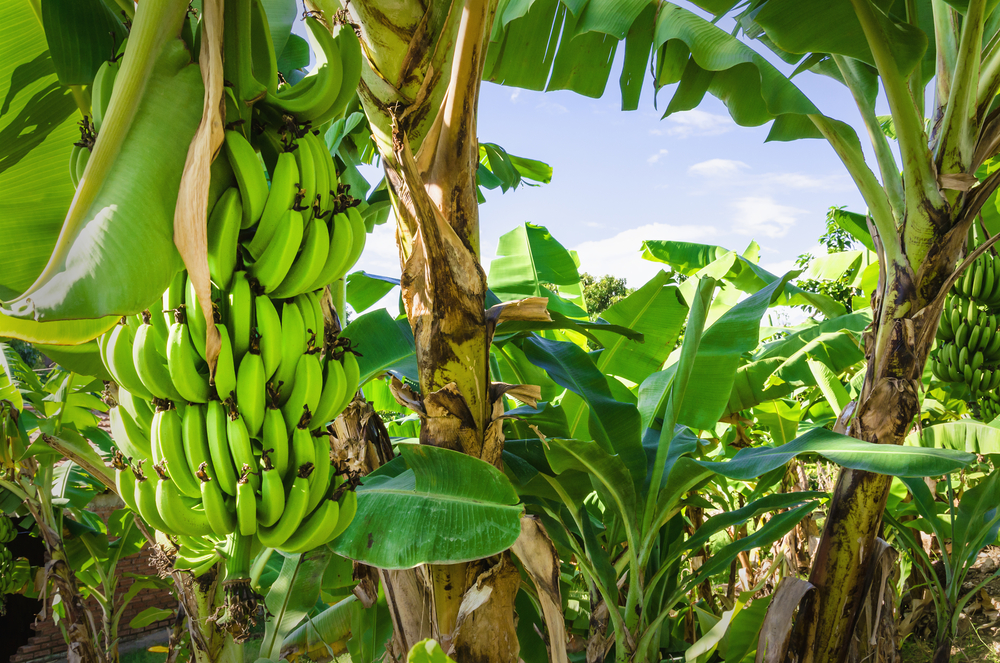In the world of botany, Madagascar is hailed as one of the world’s unique places with regards to its flora.
With about 12,000 native species of plants, about 90 percent of the flora in the country are endemic and found only in Madagascar.
Here are a few worth knowing now because they might be nearing extinction.

Photo: The Culture Trip
Madagascar banana tree (Ensete perrieri Cheesman)
Banana is one of the most consumed fruits in the world with over 100 billion bananas grown in more than 150 countries. Bananas may be extinct in some years to come because of deadly fungal disease. The future of one of our favorite fruits lies in Madagascar’s banana variety grown in specific localities in the country.
To save bananas the world over, the only known five matured species need to be saved as they are potentially the gene donor to banana as we know it. They are restricted to the western part of the country and usually sprout in a stony forest that experts say is critically endangered.

Photo: Hiroki Ogawa / WikiCommons
Za Baobab (Andasonia Za Baill.)
This plant thrives in sunny areas and well-drained soils and can be found in parched bushes, thorny deciduous forests and savanna. Za Baobab has nine species of which seven can be found in Madagascar and six are native to the island. The Za Baobab can be found as far as the Boina region, the Sambirano River Bassin beginning form Andohahela and the Mandrare River in the south-west through southern and western Madagascar.
The tree can be spotted miles away standing between 33 to 131 feet tall which narrows at the top with a wide base of about 20 feet. Za Baobab has even become an object of worship by the islanders.

Photo: Kew on Flickr / Flickr
The Madagascar periwinkle (Catharanthus roseus)
The Madagascar periwinkle has medicinal properties that make it valuable to the world of medicine, particularly in preventing cancer discovered in the 1950s.
Also having anti-diabetic properties, the Madagascar periwinkle can also be found in many homes around the world because of its beautiful pink and white petals that come in fives for each flower. The Madagascar periwinkle survives in woodlands, forests, grasslands and in sandy and limestone soils.
Its ability to thrive in such environments has not made it a likely candidate for extinction. However, experts fear that might be changing soon because of its chemical capabilities to the world of medicine.

Photo: Rafael Medina / Flickr
Octopus trees (Didierea madagascariensis Baill.)
The Octopus trees are “thorny, slightly succulent, deciduous shrubs whose leaves grow in groups on thinly separated trunks.”
Indigenous to the parched southwest of Madagascar, this tree grows in the spiky dry forests of the country. This stretch of dry forest is home to the highest percentage of endemic plant species on the island of which 45 percent of the genera and 95 percent of the species exist only in Madagascar.

Photo: mountainamoeba / Flickr
Darwin’s orchid (Angraecum sesquipedale)
It is native to Madagascar and sprouts near the east coast on the barks of large trees or rocks in the coastal forest. It usually connects itself on trees that have scarcer leaves and to branches that are dry and it has eccentric characteristics like its extremely long nectar spur.
It faces the loss of habitat through logging and clearance for agriculture, and through horticultural trade, although roughly one in 10 of Madagascar’s 10,000 to 12,000 vascular plants are orchards.
Orchids were Charles Darwin’s obsession as he predicted its pollination by moths about 40 years ago. There are different varieties of wild orchids but this particular one named after him has a remarkable six-pointed white star.










